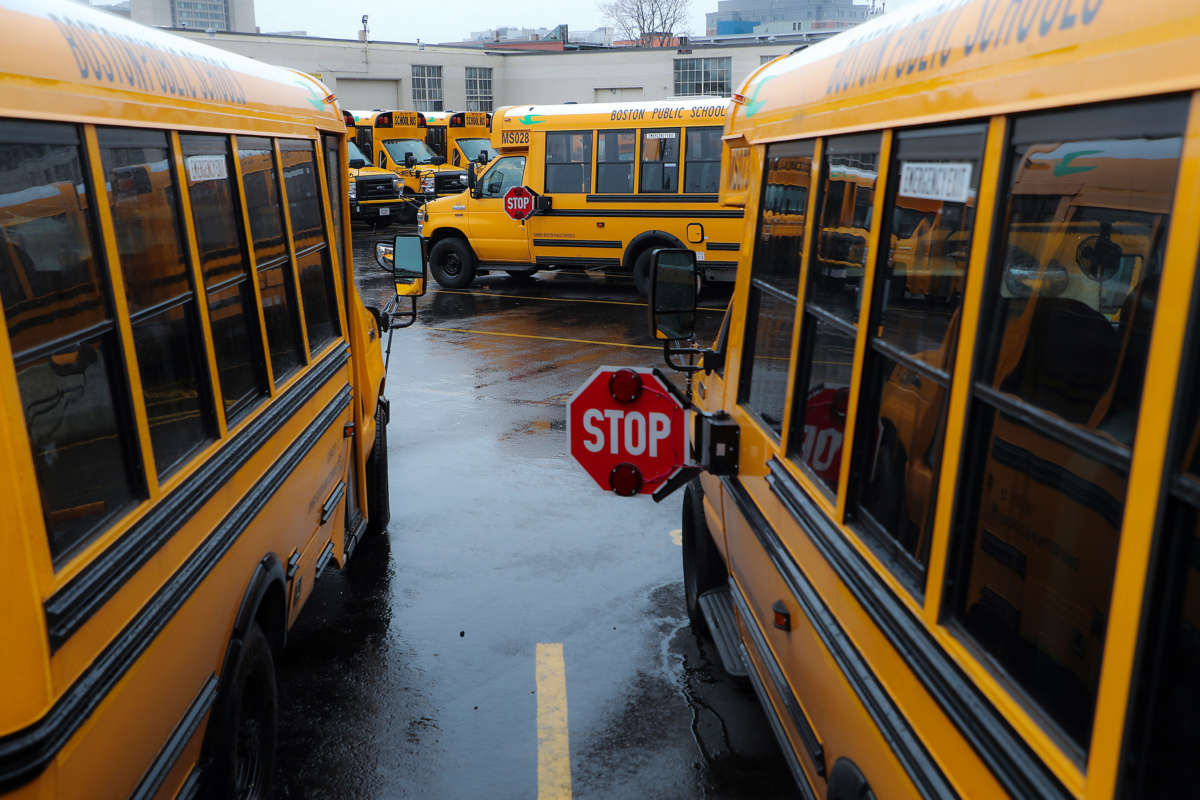Part of the Series
Despair and Disparity: The Uneven Burdens of COVID-19
Money matters in education. Someone needs to tell Mitch McConnell that.
The Senate majority leader said on April 22 that the federal government should let states battling COVID-19 go bankrupt rather than supplying critical aid. Given that the CARES Act barely relieves pressure on states’ already strained education budgets, bankruptcy severs a lifeline for students in low-wealth areas with longstanding challenges in accessing quality education.
The inequities in K-12 public school funding are well understood. Currently, schools get roughly 45 percent of their funding from the local level, or local property taxes. This is fine if you live in a neighborhood with a country club, but it is problematic if you live in an area without working streetlights. In towns like Greenwich, Connecticut, where property values are in the millions, tax revenues are higher, which means a greater share of schools’ budgets are satisfied by local funding. In low-income neighborhoods, like Hartford, Connecticut, where property values generate much lower revenue, schools are left dependent on state and federal funding.
In a perfect system, the state and federal government would fill in the gaps. But we are far from a perfect system. Since the financial crisis of 2008, combined state and local funding dropped in 36 states — largely as a result of steep tax cuts and rising education costs. During this time, public school enrollment steadily increased by over 1 million students. Meanwhile, over 300,000 education jobs have vanished. That means that nearly three-quarters of states across the country slashed education spending at a time when schools were ballooning and families were reeling from job loss.
You might be tempted to think schools are becoming more resourceful. You might be thinking that schools are trimming waste or spending more efficiently to educate their students.
Evidence suggests that’s not the case. The National Bureau of Economic Research found that per-pupil spending cuts in the wake of the Great Recession led to drops in test scores and college matriculation. The majority of schools are scrambling to serve more students with less money. This is not efficiency. This is a failure in policy and leadership.
Unfortunately, there seems to be no urgency from the federal government to address this failure. In the midst of another global recession — and when analysts think the worst is yet ahead — McConnell wants to leave states and schools out to dry while bailing out large corporations. It seems like legislators repeatedly pit short-term economic interests against long-term educational ones, presenting a false dichotomy that regularly rewards corporate recklessness.
There is undoubtedly room for improvement in school spending. Poor accounting contributes to more funds going toward wealthy students than low-income students, primarily because wealthier areas draw more advanced, higher-paid teachers. One way to solve this is to revise the uniform salary schedule and include subject matter and student demographics into teacher pay, rather than seniority and credentials. However, the need to improve school accounting proves the need for more funding. Getting salary restructuring right requires resources.
Study after study has confirmed that school spending, especially when directed at retaining high quality teachers and reducing class sizes, has a positive impact on student outcomes — most significantly for students from low-income families. Investing in education narrows the achievement gap and increases future earnings drastically for students living in poor neighborhoods. Yet, despite the evidence, some legislators still prefer to give companies a pass over investing in our future.
Education inequities will get a lot worse after COVID-19, unless Congress acts now. Researchers project dramatic learning loss — up to 50 percent in math and 30 percent in reading — when students return to school. This is staggering given the expected knowledge loss over a typical summer break: 27 percent less math and 20 percent less reading compared to the previous school year. Additionally, many special education students — especially those with severe learning and physical disabilities — will require compensatory education, as this shutdown disproportionately sets back their learning and skills development.
Congress must use this opportunity to step up aid. While the $13.5 billion stimulus earmarked for K-12 public schools in the CARES Act is a good start, it is nowhere near enough. A group of superintendents, teachers’ unions, and family advocates are pushing legislators for roughly $200 billion in education funding to keep teachers in classrooms and provide remedial and trauma services once schools reopen.
Given that the American Recovery and Reinvestment Act of 2009 provided only $100 billion for education, winning more federal funding this time around will be an uphill battle. Governors must make education a priority and pressure Congress to set aside at least $200 billion in education funding that helps schools in the hardest-hit districts. Legislators should avoid the mistakes of the last recession, where stimulus money failed to adequately support schools in low-wealth districts and was pulled well before state budgets recovered.
What we need now is swift and equitable leadership. Threats of bankruptcy and shameless politicking will not cut it. We cannot afford to let our students fall through the cracks again.
48 Hours Left: All gifts to Truthout now matched!
From now until the end of the year, all donations to Truthout will be matched dollar for dollar up to $28,000! Thanks to a generous supporter, your one-time gift today will be matched immediately. As well, your monthly donation will be matched for the whole first year, doubling your impact.
We have just 48 hours left to raise $28,000 and receive the full match.
This matching gift comes at a critical time. As Trump attempts to silence dissenting voices and oppositional nonprofits, reader support is our best defense against the right-wing agenda.
Help Truthout confront Trump’s fascism in 2026, and have your donation matched now!
